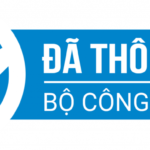- Fueling Independence: Can a Creator Lifestyle Be Built Around Platforms Like OnlyFans?
- Understanding the Rise of the Creator Economy
- Financial Realities: Income and Expenses
- Building a Sustainable Brand
- The Challenges and Risks Involved
- Navigating the Future of Creator Monetization
Fueling Independence: Can a Creator Lifestyle Be Built Around Platforms Like OnlyFans?
The digital landscape has dramatically altered how individuals pursue financial independence, offering avenues beyond traditional employment. Platforms like OnlyFans, onlyfans initially known for adult content, have evolved into a diverse space where creators can monetize their passions and build communities. This shift raises a critical question: can a sustainable and fulfilling lifestyle truly be built around platforms like OnlyFans, and what are the factors that contribute to success – or failure – in this burgeoning creator economy?
Understanding the Rise of the Creator Economy
The creator economy is fueled by the democratization of content creation and distribution. Previously, gatekeepers—such as media corporations and record labels—controlled access to audiences. Now, individuals can directly connect with fans through platforms like YouTube, Twitch, Instagram, and, increasingly, OnlyFans. This direct access bypasses traditional intermediaries, allowing creators to retain a larger percentage of the revenue generated from their work. This is particularly appealing for those seeking financial autonomy and control over their creative output. The platforms themselves facilitate this by providing tools for content hosting, subscription management, and direct communication with fans.
OnlyFans, while often associated with a specific type of content, offers a flexible model that resonates with a broad spectrum of creators. It operates on a subscription basis, where fans pay a monthly fee to access exclusive content from their favorite creators. This recurring revenue model provides a level of financial stability that can be difficult to achieve with traditional advertising-based platforms. This has led to a diverse range of content thriving on the platform, from fitness instructors and musicians to artists and chefs.
However, the creator economy isn’t without its challenges. Creators are often responsible for all aspects of their business, from content creation and marketing to customer service and financial management. This requires a diverse skillset and significant dedication. The inherent instability of relying on a single platform is also a concern, as algorithm changes or platform policies can drastically impact a creator’s income and reach.
Financial Realities: Income and Expenses
The financial potential on platforms like OnlyFans varies wildly. While some creators earn substantial incomes, a vast majority struggle to generate a livable wage. Income is influenced by factors such as content quality, niche appeal, marketing efforts, and engagement with fans. It’s not simply about creating content; it’s about building a brand and cultivating a loyal fanbase. Successful creators often treat their online presence as a full-time business, devoting significant time and resources to its development.
Furthermore, it’s important to acknowledge the expenses associated with being a creator. These can include equipment costs (cameras, lighting, editing software), marketing and advertising expenses, subscription fees for various services, and potentially legal and accounting fees. Creators also need to account for taxes, which can be complex when income is generated from multiple sources. Failing to properly manage expenses can quickly erode profits, even for those with a substantial following.
Here’s a simplified overview of potential income versus expenses for a hypothetical OnlyFans creator:
| Subscriptions (Average $20/month, 100 Subscribers) | $2,000 |
| Tips/Custom Requests | $500 |
| Equipment & Software | $150 |
| Marketing & Advertising | $200 |
| Taxes (Estimated 25%) | $562.50 |
| Net Income | $1,587.50 |
Building a Sustainable Brand
One of the most crucial aspects of success on platforms like OnlyFans is building a sustainable brand. This involves defining a unique niche, creating high-quality content consistently, and engaging authentically with fans. A strong brand identity helps creators stand out from the competition and foster a loyal following. It also allows them to diversify their income streams beyond the platform itself, for instance through merchandise sales, online courses, or collaborations.
Authenticity is key. Fans are more likely to support creators they perceive as genuine and relatable. This means being transparent about your work, sharing your personality, and responding to messages and comments. Building a community around your content fosters loyalty and encourages fans to become active participants in your journey. It’s not enough to simply *broadcast* content; you must actively *engage* with your audience.
Here’s a list of key elements to consider when building a creator brand:
- Niche Selection: Choose a specific area of focus to attract a targeted audience.
- Content Quality: Invest in creating high-quality content that provides value to your fans.
- Consistent Posting Schedule: Maintain a regular upload schedule to keep fans engaged.
- Brand Voice: Develop a consistent tone and style that reflects your personality.
- Fan Interaction: Actively respond to comments and messages, and build a community.
The Challenges and Risks Involved
While the creator economy offers enticing opportunities, it’s essential to be aware of the potential challenges and risks. These range from the instability of relying on a single platform to issues surrounding content ownership and intellectual property. Algorithms can change unexpectedly, impacting a creator’s visibility and income. Platform policies can also be unpredictable, leading to account suspensions or content restrictions. Creators must be adaptable and prepared to navigate these uncertainties.
Privacy and security are also significant concerns. Creators often share personal information and content online, which exposes them to potential risks such as harassment, doxxing, and identity theft. It’s crucial to take steps to protect your privacy and be mindful of the information you share. Financial security is another factor: income can be variable, and managing finances effectively is essential for long-term sustainability. Legal and tax implications are also complex and should be addressed with professional guidance.
Consider these statistical nuggets regarding creator revenue and platform dependence:
- Approximately 80% of creators earn less than $500 per month on OnlyFans.
- Platform algorithm changes can lead to a 20-30% decrease in visibility overnight.
- Over 50% of creators rely on OnlyFans as their primary source of income.
- The average creator spends 15-20 hours per week on content creation and promotion.
Navigating the Future of Creator Monetization
The future of creator monetization is likely to be characterized by greater diversification and a move towards platform independence. Platforms are beginning to offer more tools for creators to build direct relationships with their fans and control their own brand. Blockchain technology and NFTs (Non-Fungible Tokens) hold promise for enabling creators to monetize their work in new and innovative ways, potentially circumventing traditional platforms altogether. This allows for more fan ownership and allows creators to be involved in the revenue stream.
The development of new platforms and tools will continue to shape the creator economy. Those who succeed will be those who are adaptable, resilient, and willing to embrace new technologies. Building a strong brand, cultivating a loyal fan base, and diversifying income streams will be more important than ever. Ultimately, the key to achieving financial independence in the creator economy lies in treating it as a business, prioritizing long-term sustainability, and remaining committed to delivering value to your audience.
| OnlyFans | Direct fan monetization, High earning potential, Flexible content policy | Platform dependence, Content association, Algorithm volatility |
| Patreon | Recurring revenue, Community focus, Creator control | Lower earning potential, Limited content options, Platform fees |
| YouTube | Large audience, Discovery potential, Multiple monetization options | Algorithm dependence, Ad revenue fluctuation, Content restrictions |



